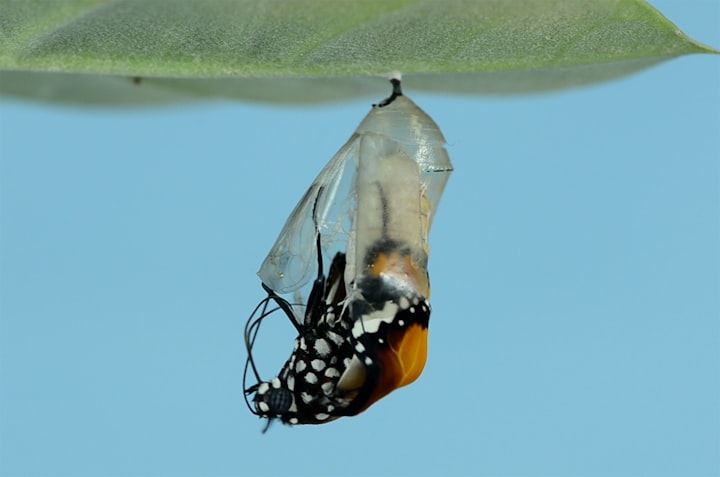Hello, Bear!
My week bonding with black bears in the wild

I hope I see some bears while I’m here.
That was the main thought in my head as I pulled into a long dirt driveway in the backwoods of northern Minnesota. I’d flown to Minneapolis-St. Paul from Boston, rented a car, and driven the rest of the way. It had been a long day, and the late afternoon sun slanted through the branches of the surrounding trees.
I had come expressly to see black bears, and to learn everything I could about them from bear biologist Dr. Lynn Rogers at the Northwoods Research Center who was willing to teach others what he knew of these amazing creatures. I was writing a book where bears figured prominently and had stumbled upon this opportunity by accident. When I found it I could hardly sign up fast enough. Now here I was, wondering what might unfold over the following week.
I pulled into a clear space next to another car. In front of me stood an unassuming clapboard house with a low wooden porch.
And all around me, strolling as if they owned the place, were black bears. On the porch, wrestling on the lawn, their claws scratching on bark as they climbed trees.
I quickly went from wondering if I would see bears to wondering if I should get out of the car.
“It’s fine!” an older man with a shock of white hair called, waving. “Welcome! Just get out and come on over. They won't bother you.” This was Dr. Lynn Rogers himself, at that moment occupied by a yearling nosing his pockets.
There were about a half-dozen of us guests there, from all over the country and many different backgrounds, and over the next week we saw more bears than I’d ever imagined.
They tended to come to the center at dawn and dusk, in a strict order starting with the older males, then younger males, then females without cubs, then females with cubs. The latter were far more wary of other bears than of us humans. While they were at the center, they tolerated us. Nosed around us, picked up water bottles, sniffed our cameras, ate the nuts and seeds we put down for them (one dainty lady only ate off the back of her paw, never from the ground or even the porch floor). We learned to speak reassuringly and move confidently among them. One harried mama with triplets would rush us if we got too close; another with twins barely raised her head as we walked by. We learned their personalities, what they ate, how they denned and raised young. We learned how rare black bear attacks are (and how they are different from brown bears).


My days started with the thunder of bear cubs chasing each other up and down the porch steps, and ended with bears lolling on said porch as we humans chatted, or sticking their heads through the windows of the house to see what we were up to in the living room.
These were still wild bears, not pets. Some might say it was dangerous to habituate them to humans, but according to Lynn they’d had fewer problems with bears at nearby camps since the research institute began leaving food out for them. This way the researchers could weigh and even put radio collars on the bears without needing to knock them out. The bears that visit the center are also statistically less likely to be killed by hunters.
Out in the woods it was a different story. Once we left the area around the center, the bears considered that their territory, and would either hide or walk away from us. They ignored us as much as possible. Lynn followed the radio signals of collared bears so we could see where they were and what they were doing, but we were careful not to harass them. If they turned and faced us, it meant they wanted us to leave them alone. The next step would have been a bluff charge, to make it clear our presence was unwelcome, but it never came to that. When in research mode, Lynn and the other researchers would follow the bears for days, making careful observations. Once the bears determined they didn’t have food, and weren’t a threat, they ignored them. (The first thing we learned is that black bears are motivated by two things: Fear and Food).
One day we went out in search of a bear Lynn hadn’t seen in a while. He’d named her June. The collared bears, and some others that came to the center regularly, had names. Remarkably, I learned to tell them apart from bent ears, white patches of fur, scarred noses, even ways of walking. We tramped for quite a while through tangled undergrowth until we came to an area thick with ferns and juniper bushes.
“She’s right here…” Lynn murmured, turning the radio this way and that to pick up the signal. “Here, bear! Here, June bear!” he called. He pulled a bag of pecans from his pocket.
Suddenly, a large black head poked through the bushes. I quickly brought my camera up to take the shot. I zoomed in slightly, but hardly needed to; she was about three feet away from me.
More reassuring sounds from Lynn, and June ambled out to meet us. She was five, and Lynn had known her from a cub, which is why she knew his voice. She was an invaluable research bear; Lynn had followed her through years of birthing and raising cubs, and had learned a lot from her.
Lynn knelt in front of her, and put a pecan in his mouth, with half of it sticking out. June leaned forward, and took it from him gently. Our little group was suitably impressed. You’d think, being a bear, she’d just grab the entire bag of nuts and run from the crazy humans, but she chewed and swallowed and sat back as though we were all taking tea in someone’s living room.
“Anyone else want to try it?” Lynn asked.
For some reason, I was the first to put my hand up while everyone else was looking around, wondering if they’d heard right. “Me!”
I am not a particularly brave person. Nor a usually stupid one. I mean, this was still a wild animal, and one who didn’t know me at all.
“Don’t sue me if she bites your face off,” Lynn joked. “I haven’t got any money.”
I was 99% sure he wouldn’t think of letting us do it if there were any real danger. There was a risk. I understood that. But I had no thought of backing down.
I handed Lynn my camera. Then I took a pecan, put it in my mouth, and knelt in front of June. Her nose brushed my face as she took it – with her lips, not her teeth.
Once I rose and moved back, I saw that Lynn had snapped the perfect shot as I knelt there.

That whole week was an amazing, awe-inspiring learning experience. I learned the myths and realities of black bears, had the privilege of seeing them up close (very close) and developed a love and appreciation for them in a way I couldn’t have imagined. I learned how they smelled (a sweet, dusty smell, unless they’d been dining on carrion) and how to interpret the sounds they made, whether they were cubs or 500-pound adults. Even what to do when they charge, and why they might charge in the first place (usually it’s to warn you, not to hurt you – the more noise they are making, the better).
Lynn’s methods may be unorthodox, but his love for and knowledge of black bears is beyond vast. If you are in the area of Ely, MN and get a chance to go to the North American Bear Center, go. It is an educational center on all types of bears, and has its own black bears on the premises. These are not wild bears, but ones that were orphaned and/or raised by humans and cannot be returned to the wild. The public can view them from a balcony or behind a fence – this is not the research center experience described above. You can also see them via live cams any time at the website.
If you want to really get up close and personal with black bears, Lynn Rogers also still runs field study courses through the Wildlife Research Institute. It is an incredible experience (and very safe – as much as dealing with wild animals can be). If you can’t get there in person, you can also learn a tremendous amount from the daily updates on the website.
Obviously, I do not recommend trying a bear experience on your own. When I’m in the woods, I don’t follow or seek out bears just because I now understand quite a bit about their behavior. In Minnesota I was accompanied by a researcher with 50 years’ experience, who knew the bears in the area well. Do not feed bears that come to your home unless you are prepared for semi-permanent guests who will not be shy about trying to get into your house if they figure out it is a food source. (I witnessed bears at the research center trying the doorknob - they knew it was the way in, if only they had opposable thumbs!)
If you do happen to see a black bear in the woods or your yard, you can just relax and observe it as long as it’s just doing its thing. If it approaches, the best thing is to make lots of noise, and make yourself as big as possible, like jumping up and down and yelling. Most likely, however, you will walk by bears in the woods and never know they are there. They are unbelievably quiet, and when they smell or hear you approaching – which they will from up to a mile off – they will likely hide until you pass. We would never have seen June if she didn’t want to be seen!

All photos on this page © Jana Van der Veer. Images may not be used without permission.
About the Creator
Jana Van der Veer
Book and mindset coach for writers. Book lover, chocoholic. Go to www.setyourmuseonfire.com to grab your copy of 10 Questions to Ask to Get Unstuck at Any Stage of the Writing Process!






Comments
There are no comments for this story
Be the first to respond and start the conversation.